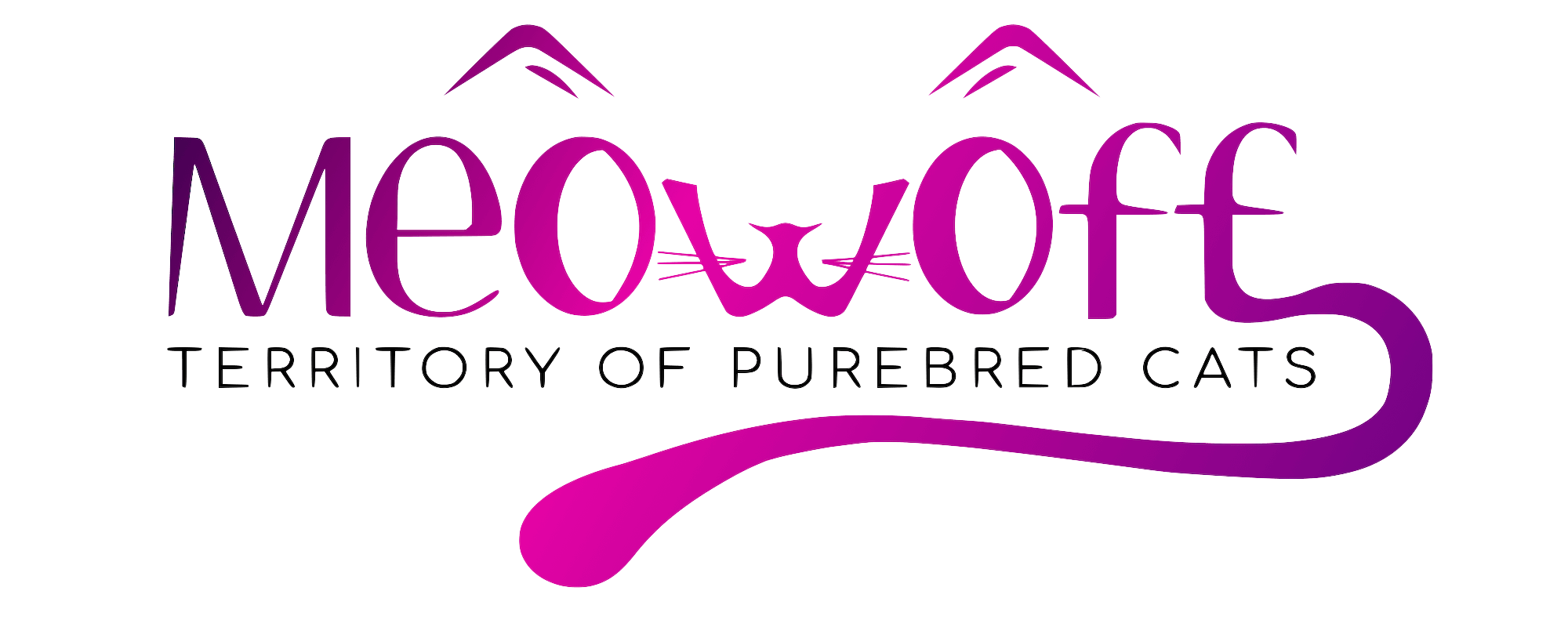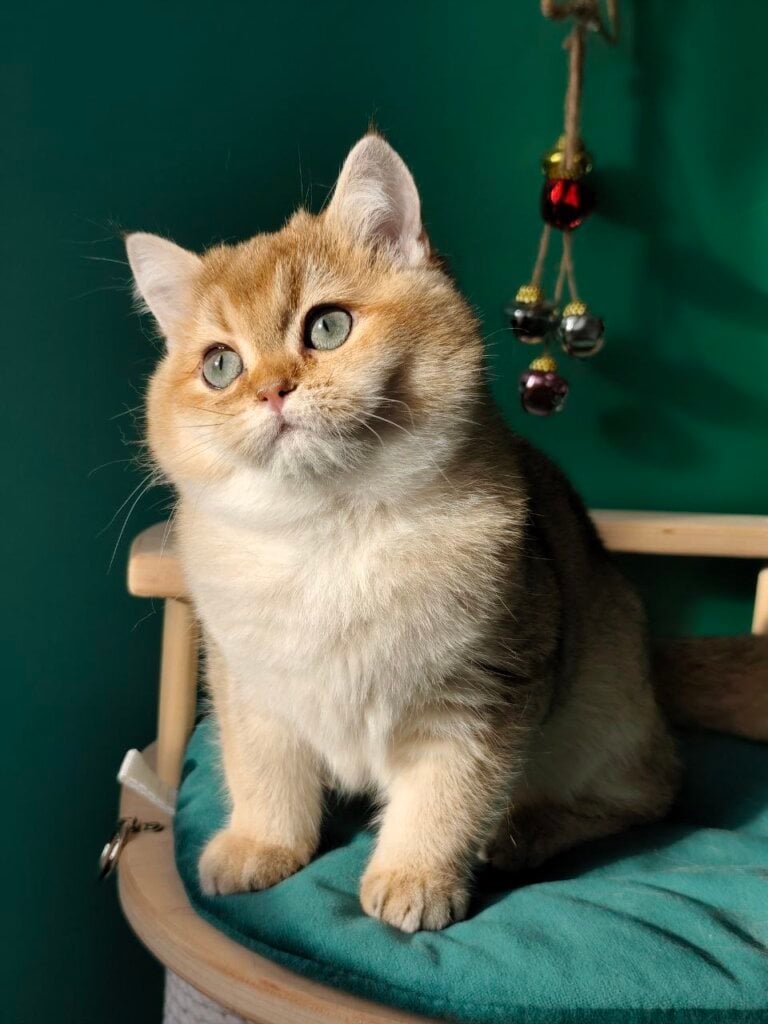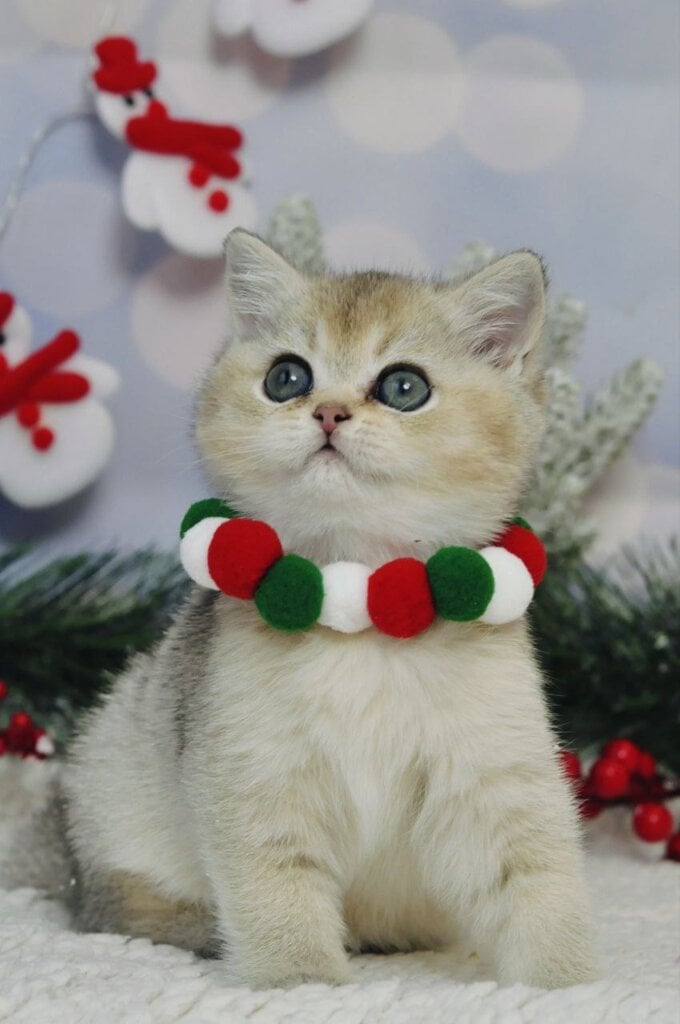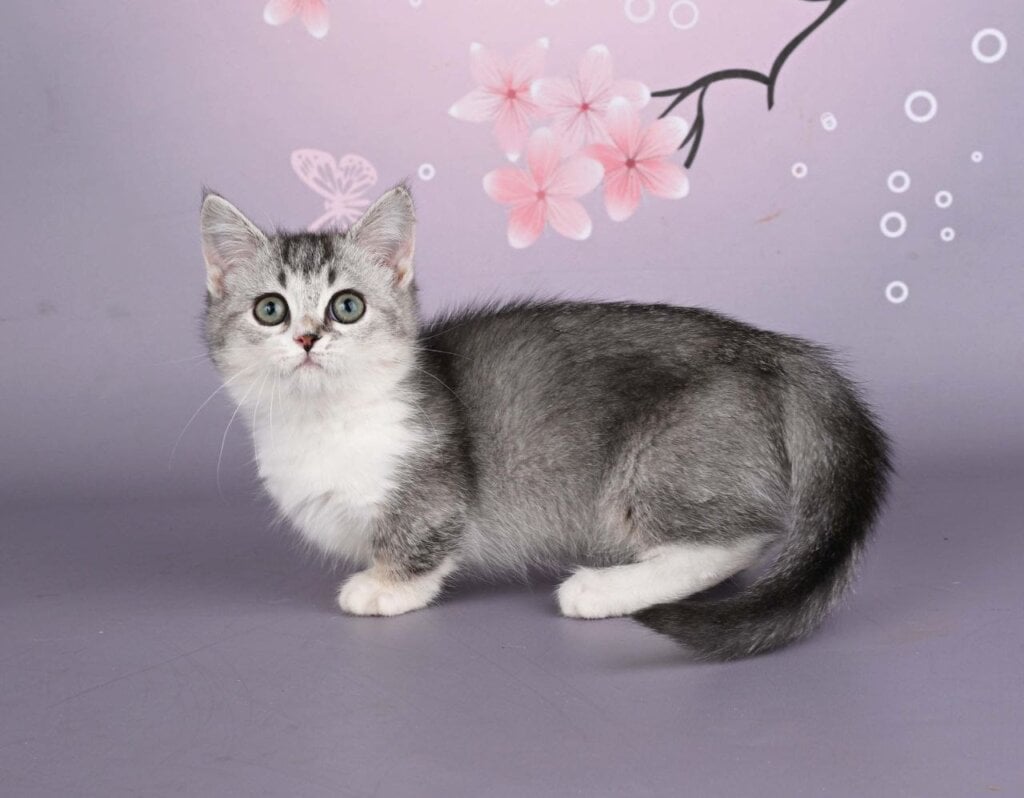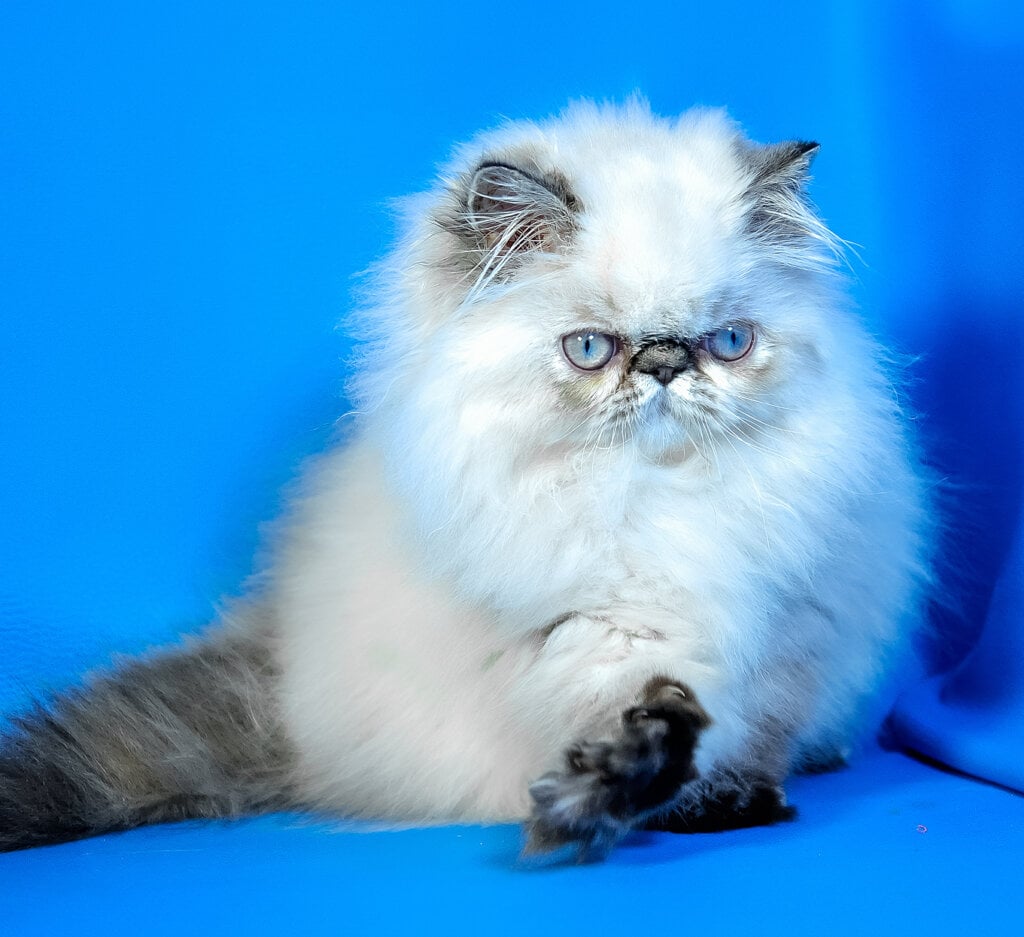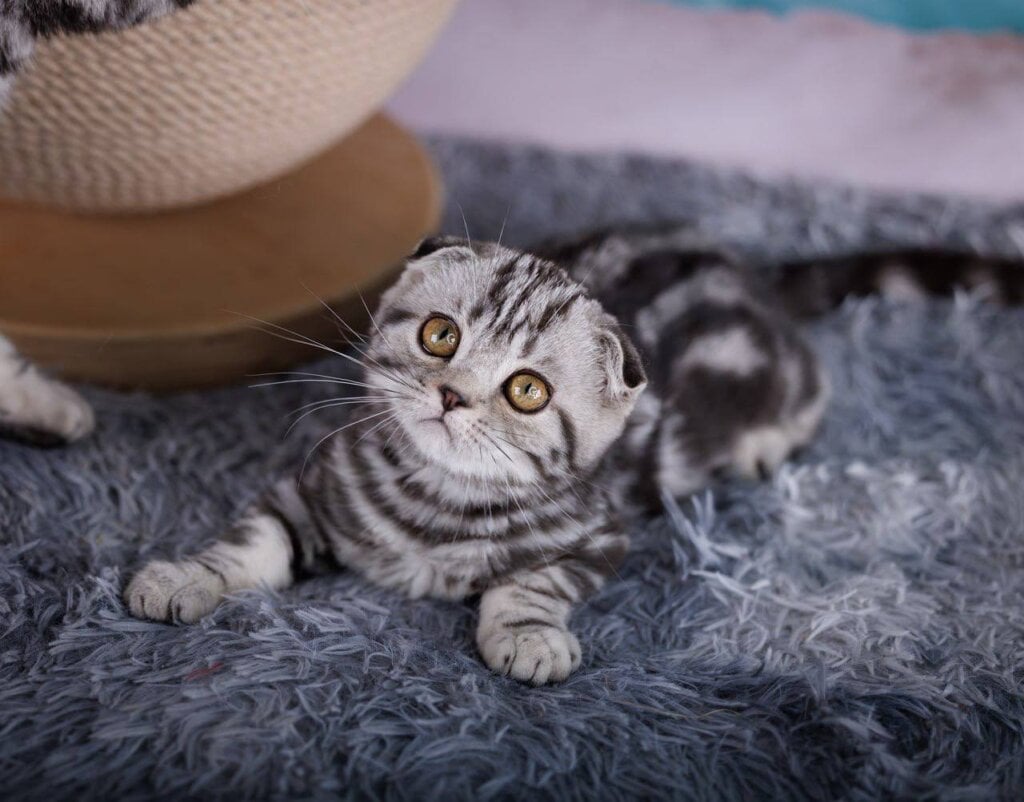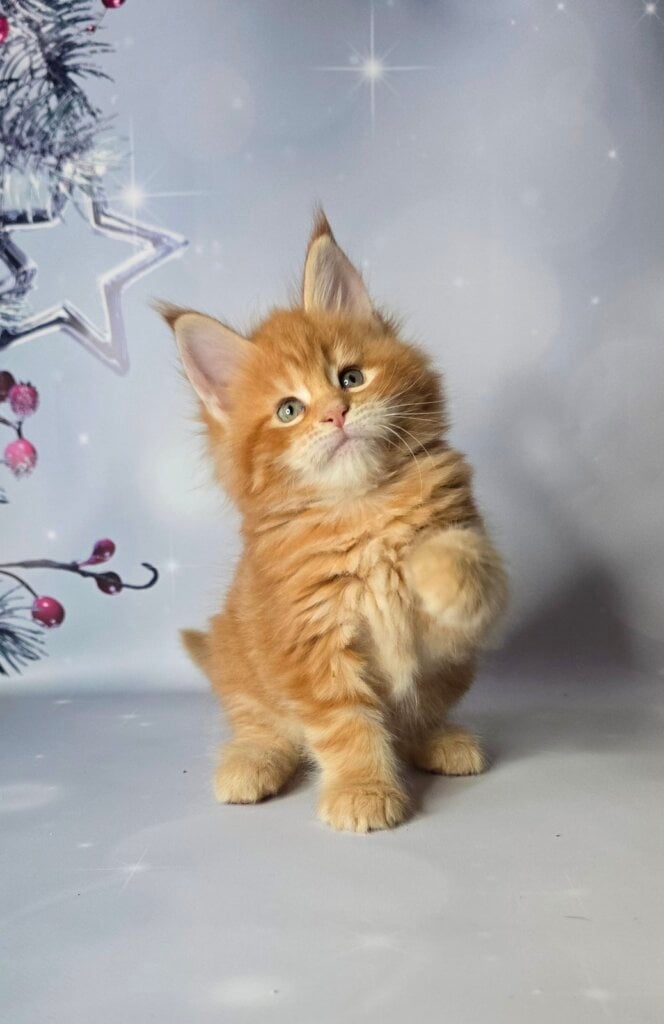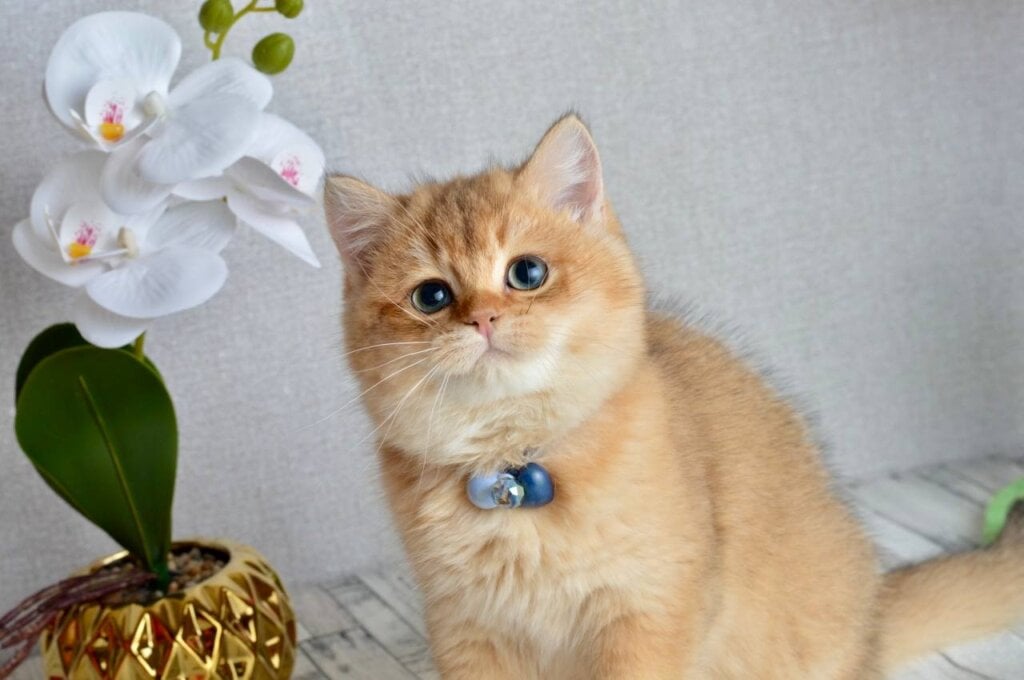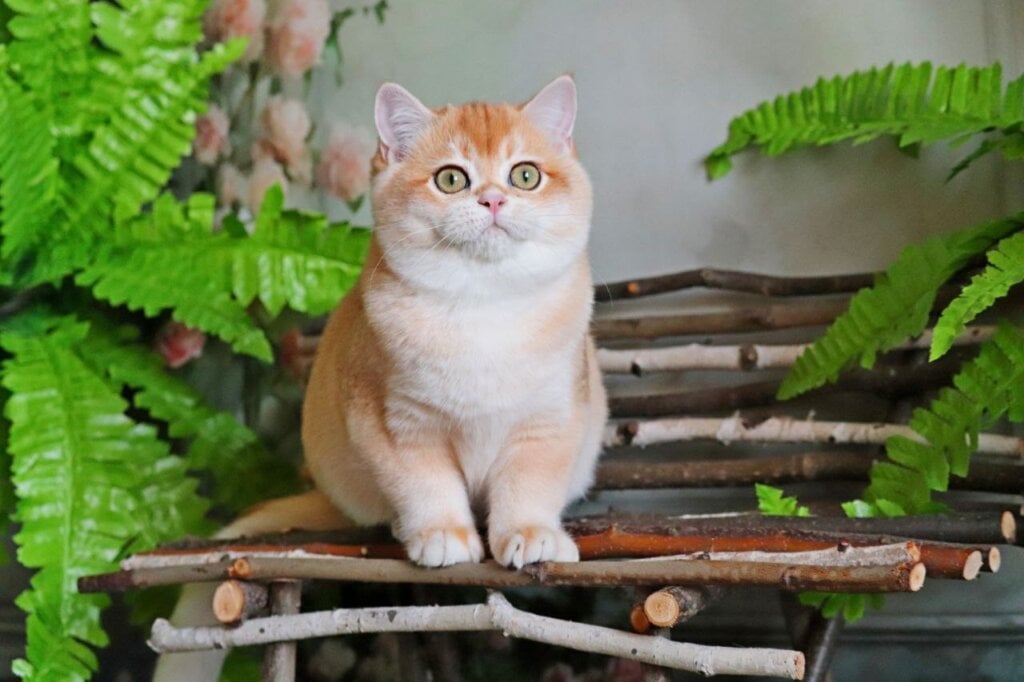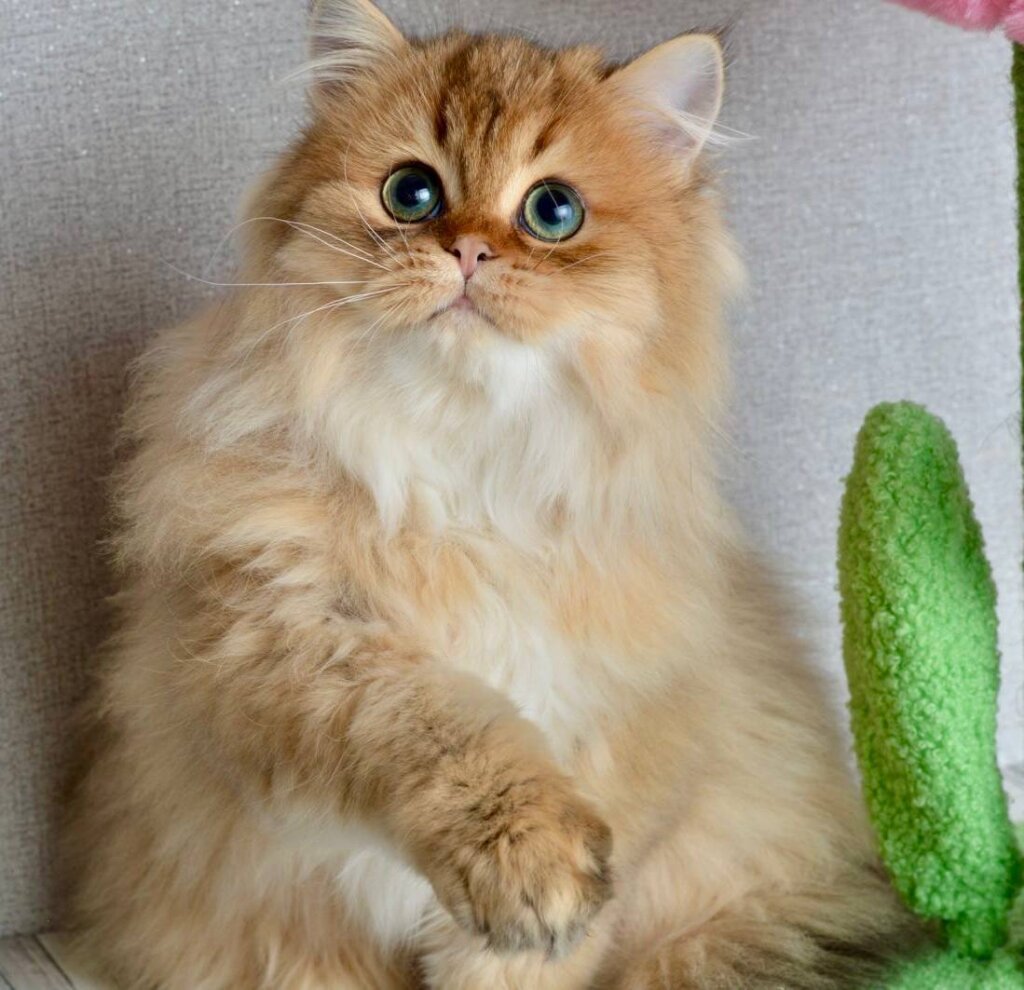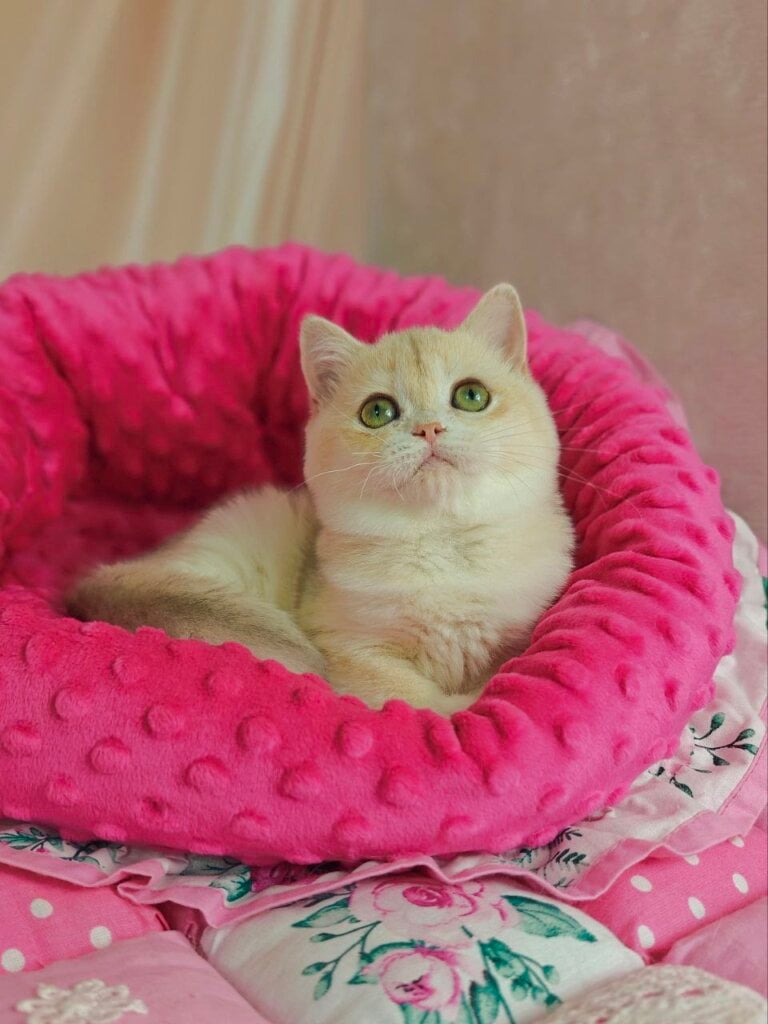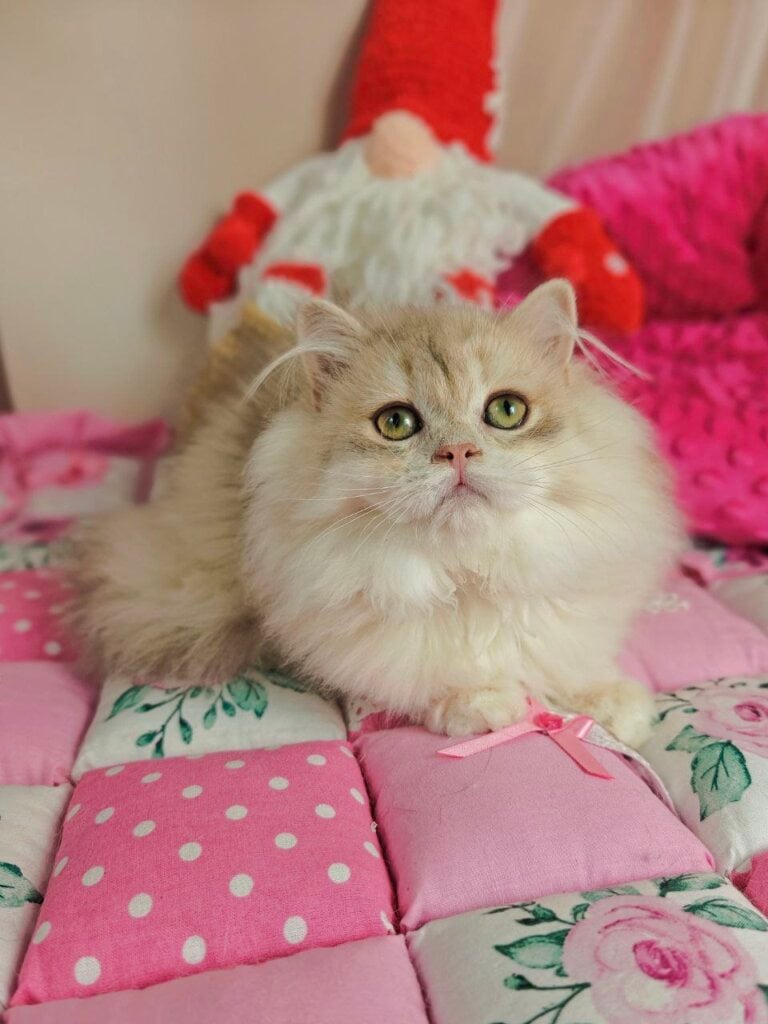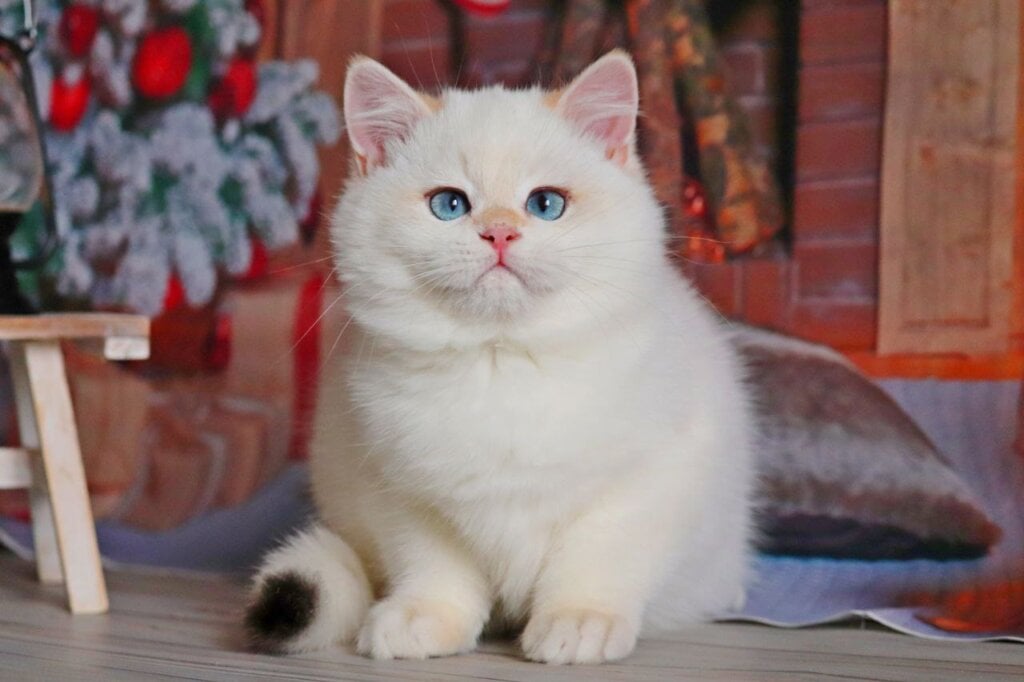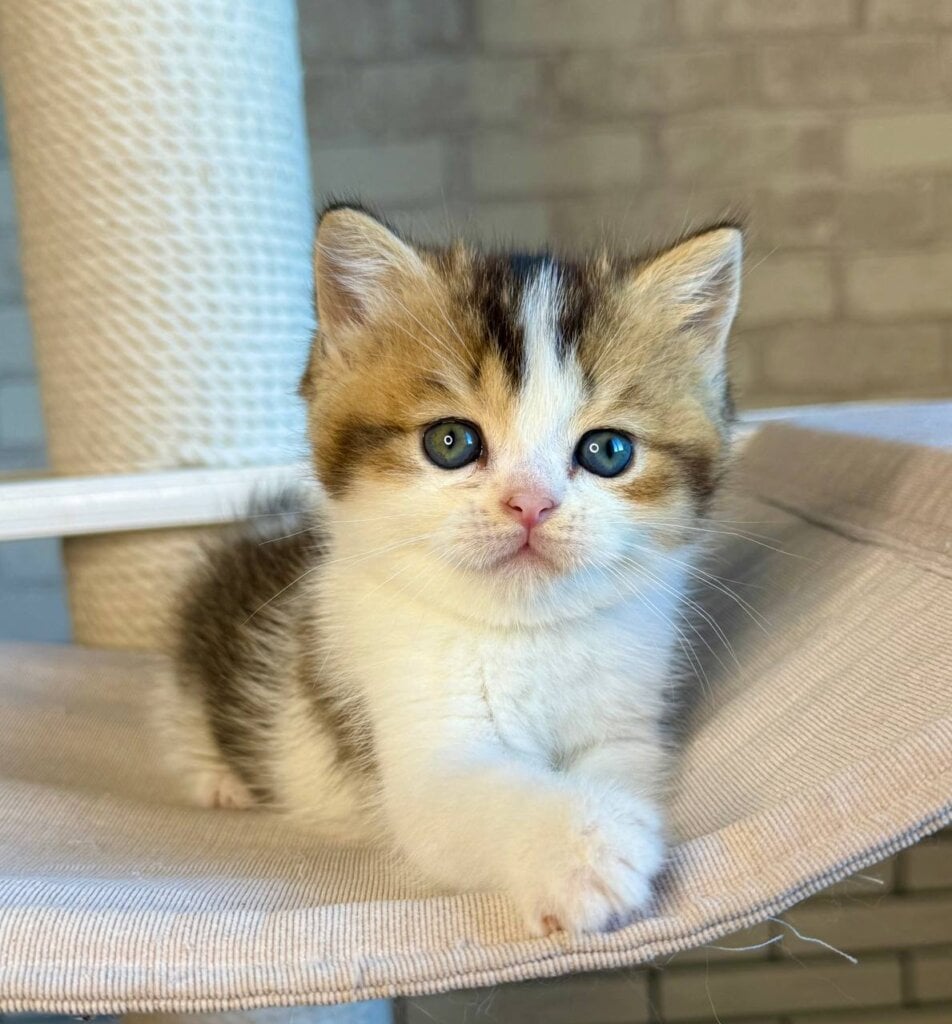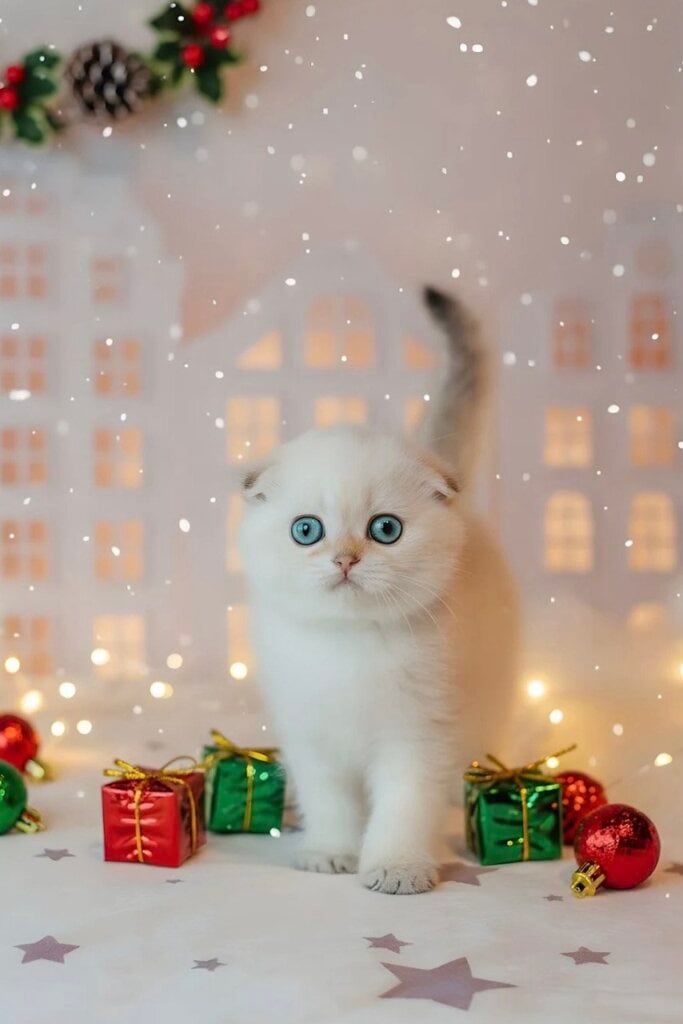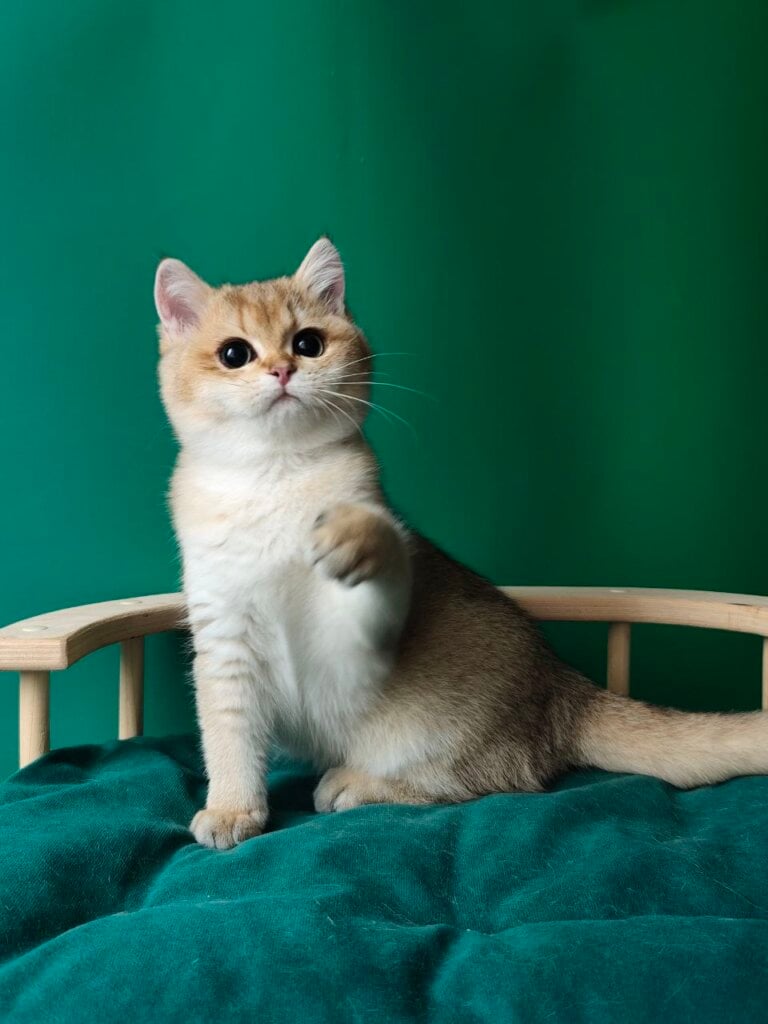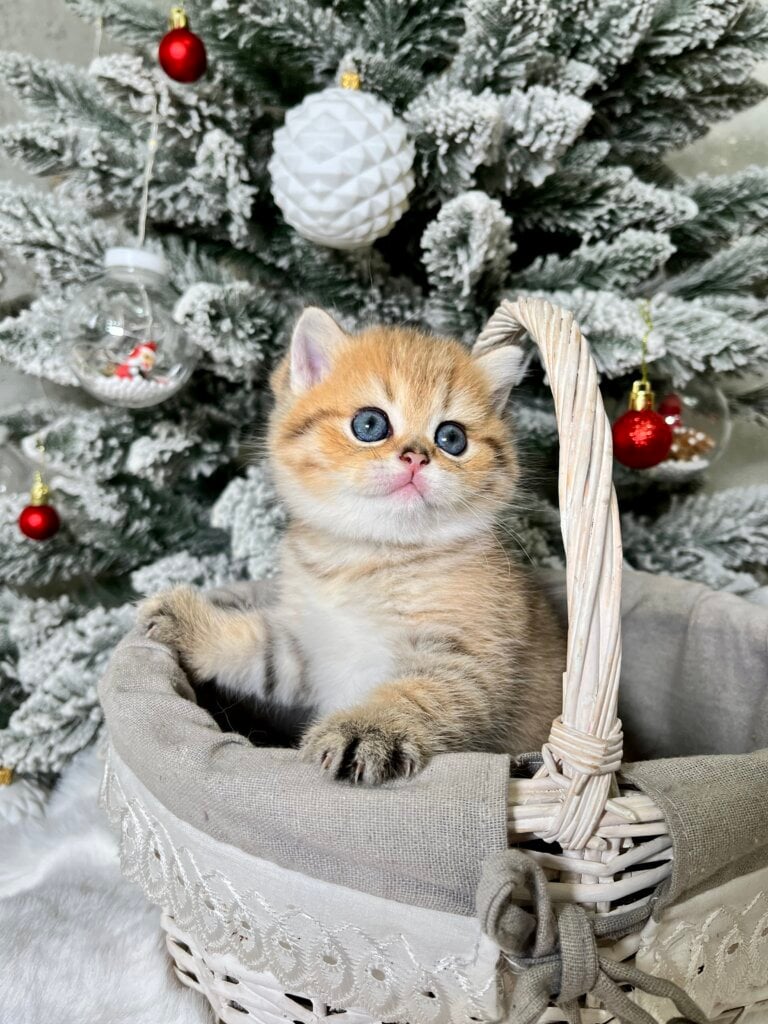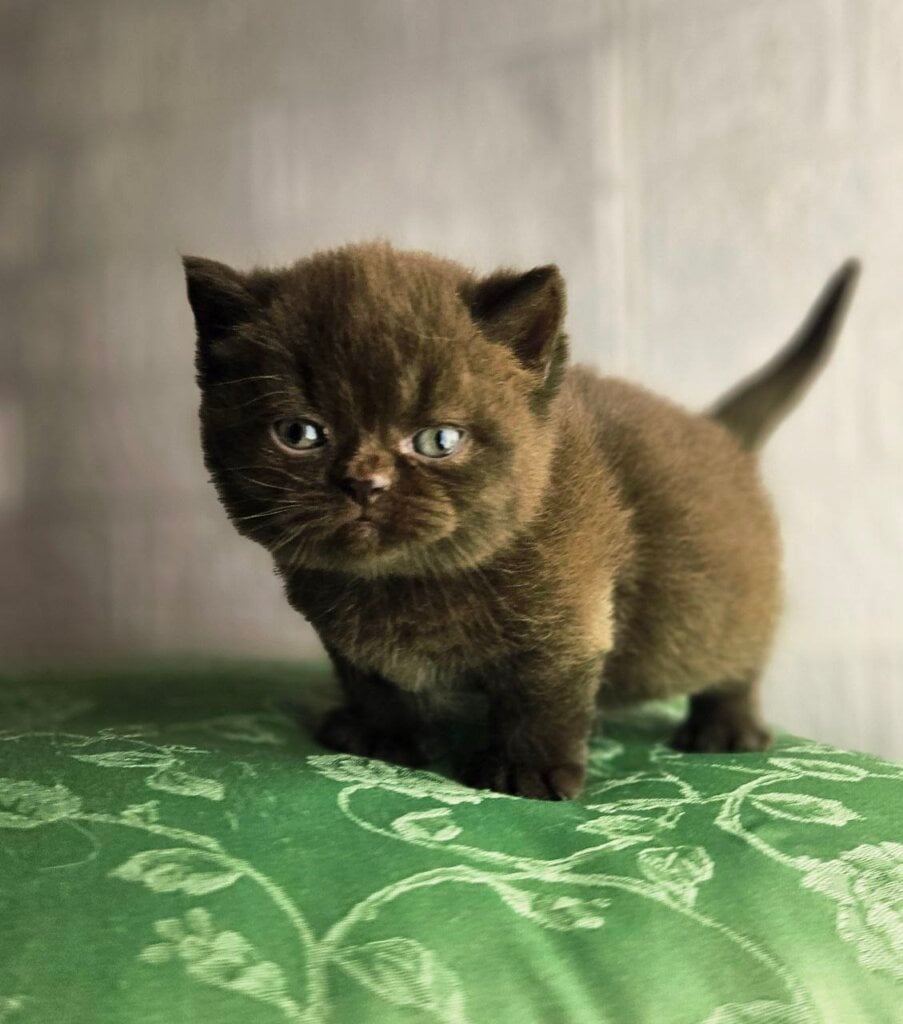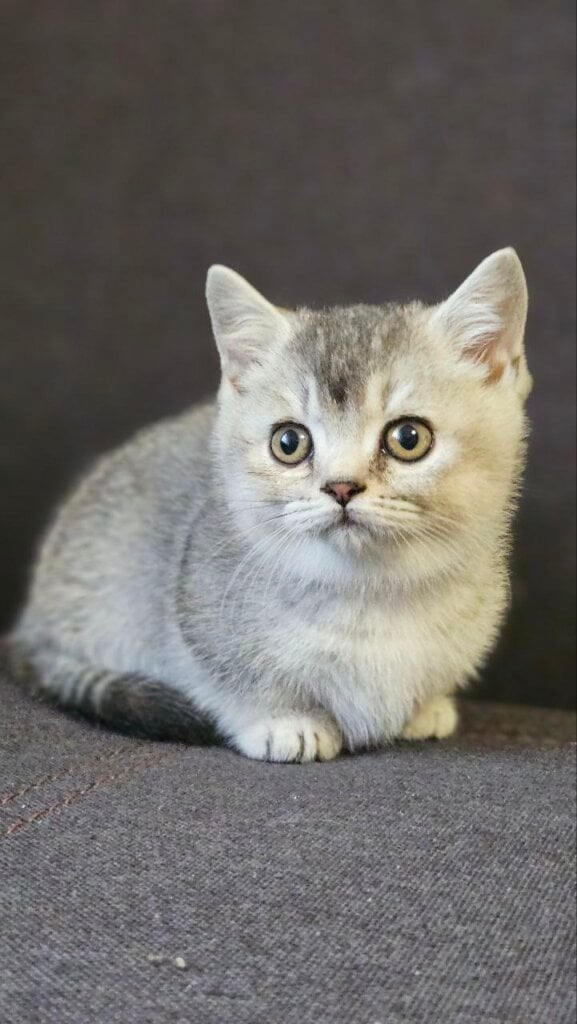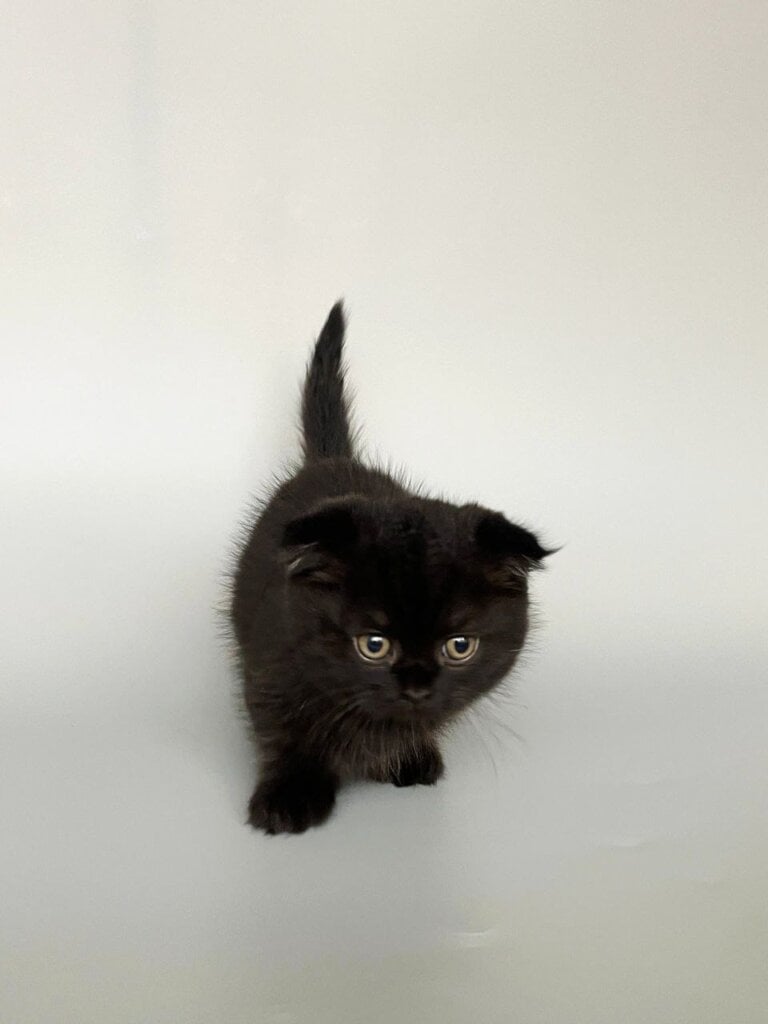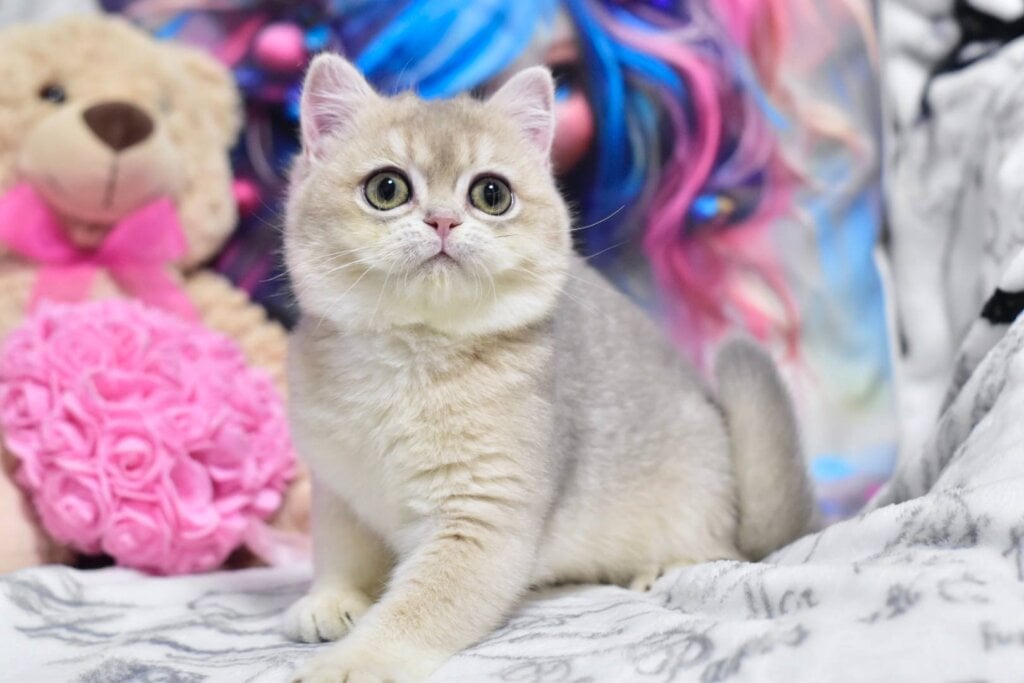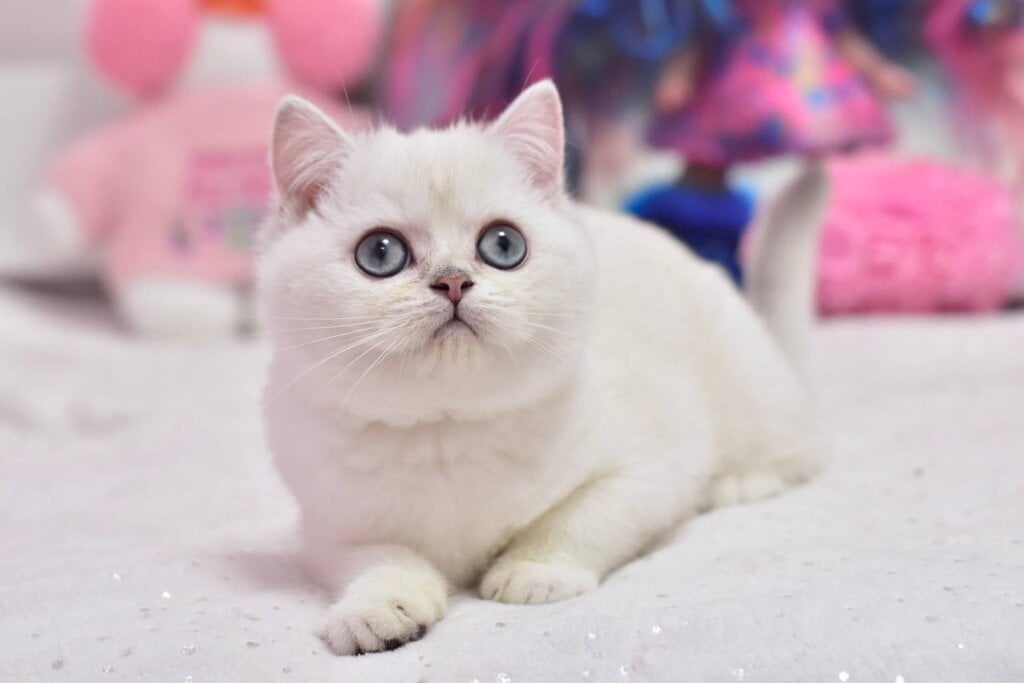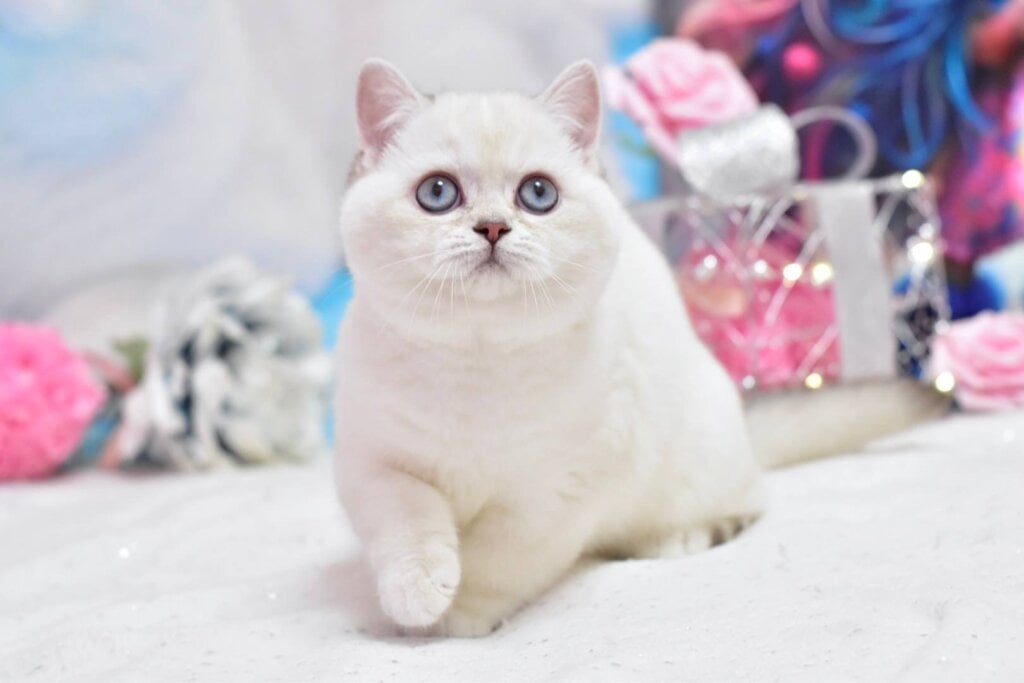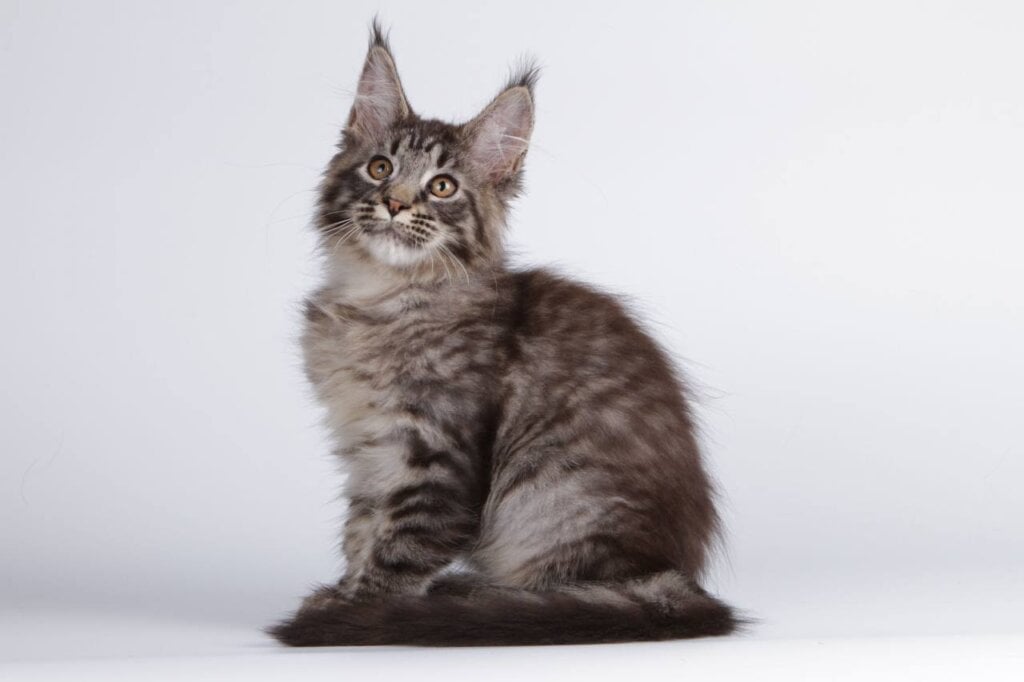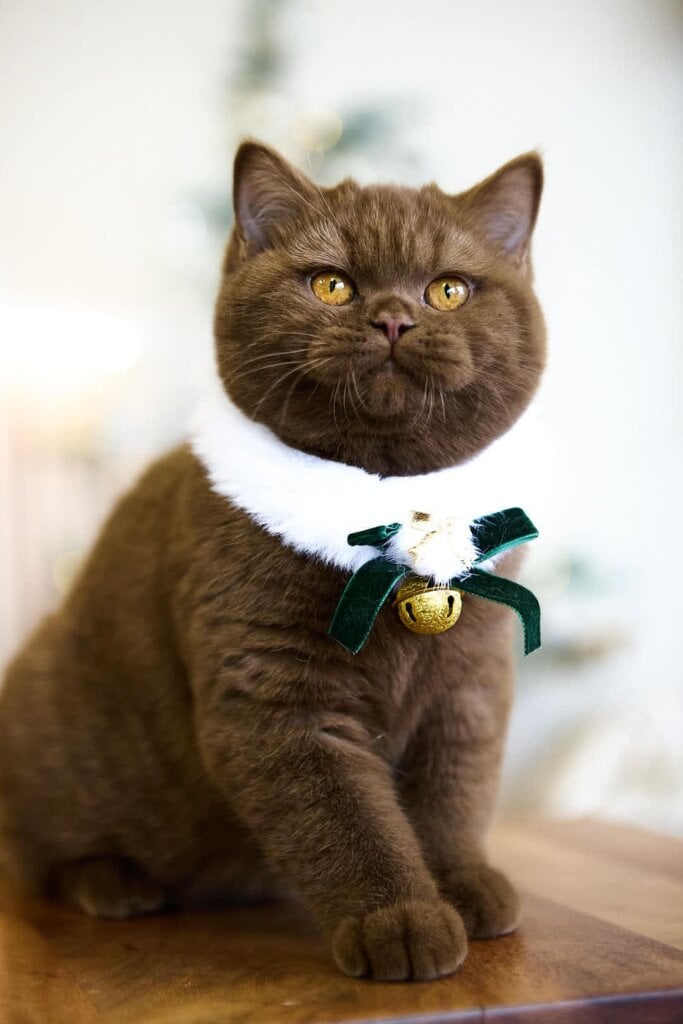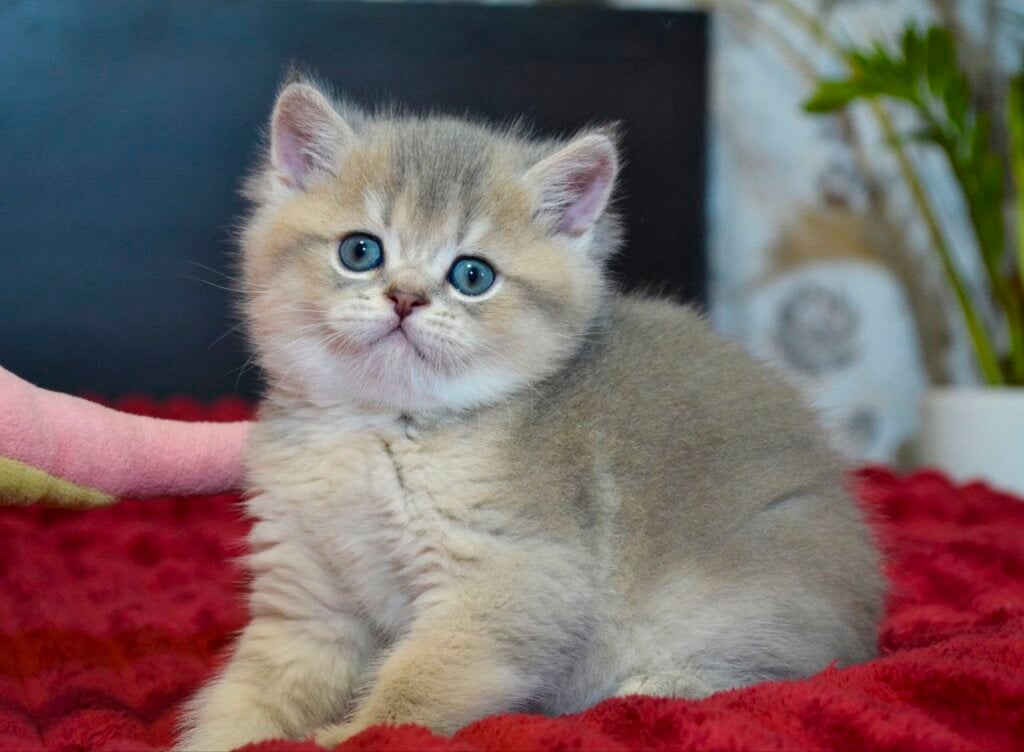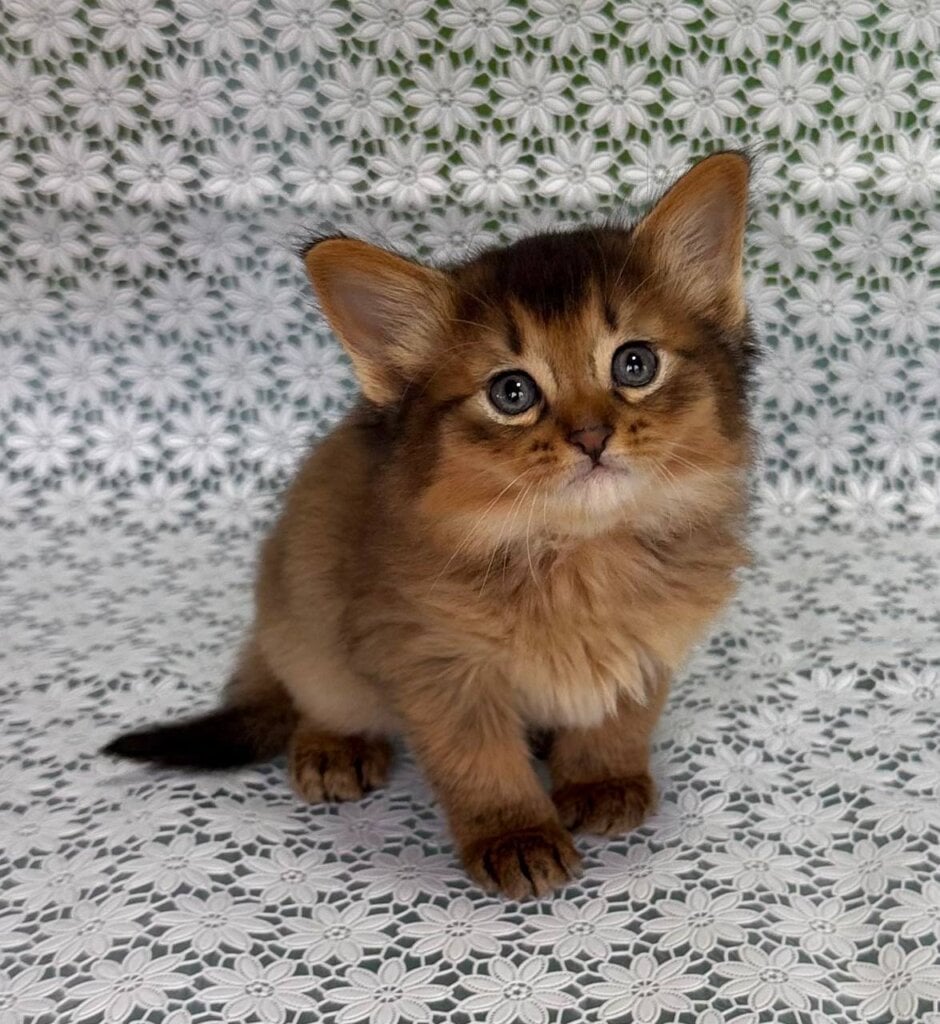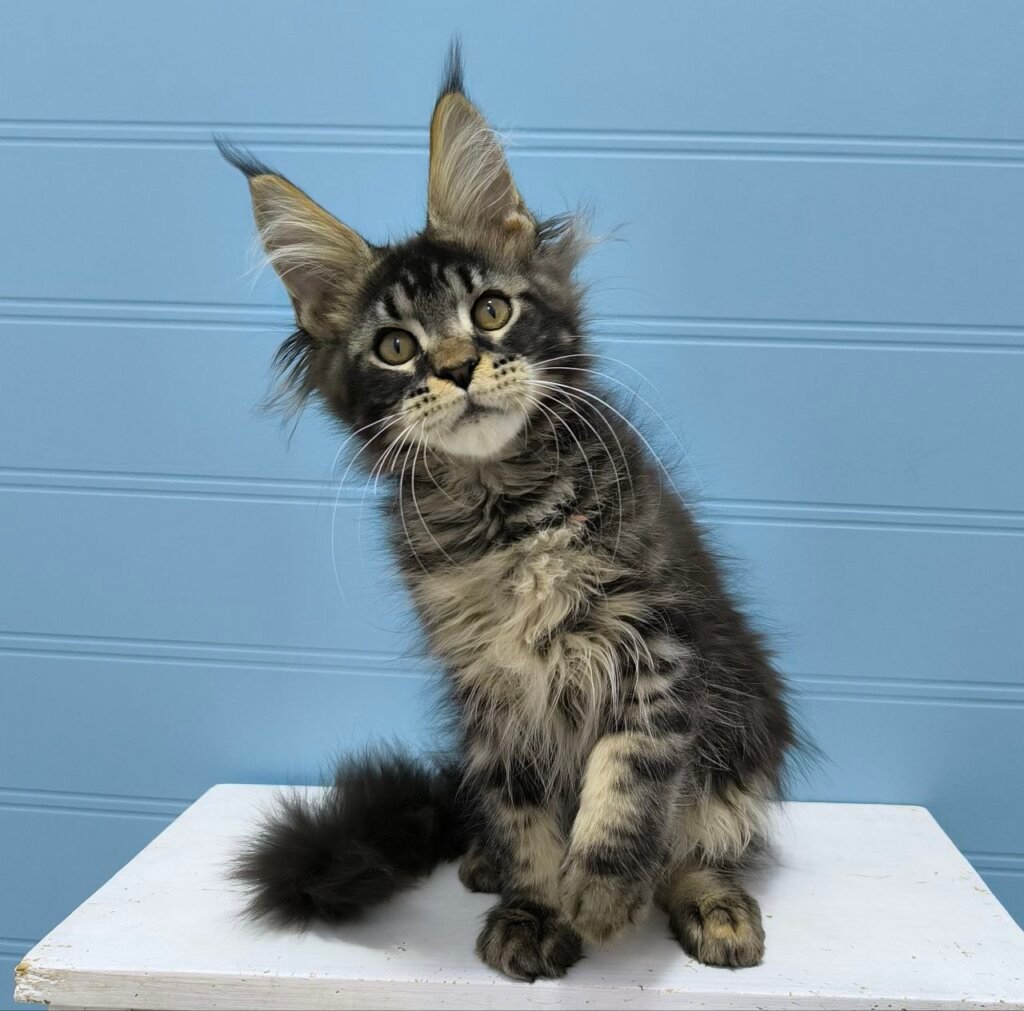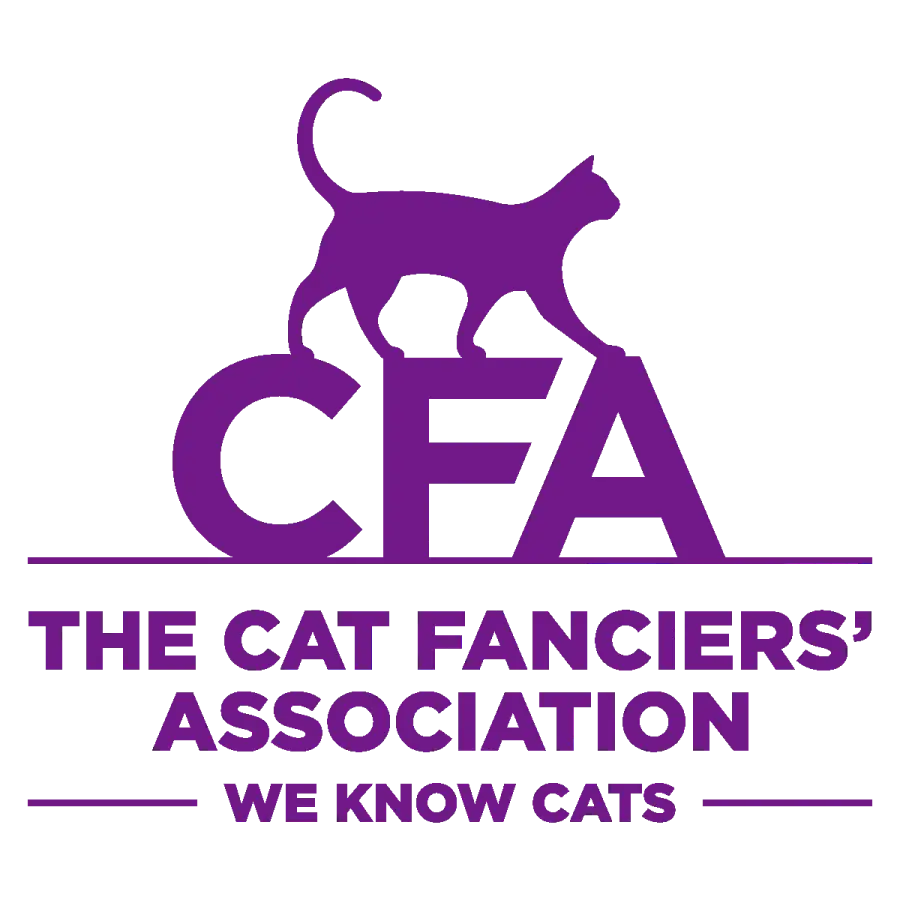- Harness training your Maine Coon is a safe and enriching way to give them outdoor exercise while preventing them from wandering off or encountering harm. Not only does it improve their quality of life but it improves your life as an owner through peace of mind.
- Maine Coons are known for their larger-than-average size and body structure, which means taking extra care when choosing a harness with the right comfort and fit. Look for designs that minimize injury or discomfort to make sure your cat is safe and comfortable.
- The most common harness styles are vest, H-style, and figure-eight. Make sure you select a quality strong material and design that works best with your Maine Coon’s personality and activity level.
- Correct size is extremely important to ensure your cat’s safety and comfort. To ensure the right size, measure your Maine Coon’s chest girth and neck circumference. From there, refer to size charts and pick adjustable harnesses to guarantee a secure yet comfy fit.
- Leash training can take time and should be approached with patience and consistency. Begin training indoors, reward them with praise or treats, and make sure every training session is brief and fun. Work to supervise outdoor adventures and celebrate small milestones.
- Make sure to keep your feline friend’s safety and comfort in mind by watching for signs of stress, discussing with your veterinarian, and modifying harnesses when needed. Having a properly-fitted harness will ensure that every outdoor adventure with your new maine coon will be an enjoyable experience for you both.
Why Use a Harness for Maine Coons?
Considering Maine Coons’ majestic size and curious personalities, it’s no surprise that these cats are natural explorers. A harness is a great solution to get them outdoors safely and comfortably while keeping them secure. A harness addresses the specific needs of larger cats, like Maine Coons. They provide security and peace of mind that collars cannot.
Benefits of Harness Training
Harness training gives Maine Coons the freedom to experience the great outdoors in a safe and controlled manner. Many of these cats thrive on mental stimulation, and introducing them to new environments can fulfill their curiosity while keeping them under your control.
Owners can employ a harness to ensure their Maine Coon develops good associations. Take short walks or trips to the park to start, to keep these experiences fun and positive! The OutBound Cat Harness XL is built for big breeds. The 600D Oxford fabric and flannelette lining make it warm, soft and incredibly skin-friendly. This makes it easier for Maine Coons to adapt to harness use, even if they aren’t naturally inclined to walk on a leash.
First, a harness prevents stress on the cat and owner alike. Over 60% of Maine Coon owners report improved behavior and decreased anxiety during outings, as the secure fit provides the cat with a sense of safety. Harness training will help establish a bond of trust and respect between you and your Maine Coon.
That deepens your relationship with them and makes their everyday life more fulfilling.
Safety Advantages Over Collars
Collars can pose serious risks for Maine Coons on outdoor excursions. If the cat pulls or gets snagged, this can result in choking or harm. A harness spreads the weight evenly over the harness’s entire chest plate and shoulders, avoiding injury.
The OutBound Cat Harness XL is a safe fit, so you can take pawsome adventures together. Its escape and backout-proof design is unique, keeping this collar escape artists – like our breed of choice – secure.
For owners living in more urban areas or places with other sudden dangers, a harness gives you that extra assurance. Secondly, it reduces the chances of accidents, so your Maine Coon doesn’t get away from you, easily ranging further during adventures.
The peace of mind that comes from being confident that your cat is safely restrained and will not escape in new or busy surroundings is immeasurable.
Enrichment and Exercise Opportunities
These lively, clever felines thrive on physical and mental activity so they need an outlet to keep them happy. A harness provides a way for your Maine Coon to safely explore the outdoors, providing an experience that can be both physically stimulating and mentally enriching.
Whether they’re sniffing an exotic plant or watching a bird flit by, such experiences recreate aspects of their wild roots and intrigue these gentle giants mentally. The OutBound Cat Harness XL allows your Maine Coon full range of motion while on an adventure.
Your feline companion will have comfortable, wide range of motion without getting hurt. Routine walks outside will keep their bodies healthy too by keeping them from becoming obese and use their muscles more frequently.
Owners consistently report that their Maine Coons are more calm and relaxed after their adventures. These adventures are perfect for fulfilling their desire for adventure and exploration.

Maine Coon Anatomy and Harness Design
More than just their big fluffiness, Maine Coons are muscular and sturdy. It’s no surprise then that their friendly personalities have made them a popular breed with cat lovers. Their unique anatomy poses special challenges that make it critical to choose the right harness. For these long, powerful cats, a well-designed harness provides security without restriction. Here’s how to interpret the most important factors.
Unique Size and Body Structure
As one of the largest domestic cat breeds, Maine Coons can tip the scales at 25 pounds or more. Their muscular build and broad chests distinguish them from other smaller breeds, making standard harnesses ill-fitting. A well-engineered harness made for bigger felines like the OutBound Cat HarnessXL™ would cater to these physical attributes.
Given their size, this harness is great quality, well-designed, and color-wise, just perfect. It allows for their natural range of motion, making them more comfortable while wearing it. Wide, long torsos and thick coats make Maine Coons easily distinguishable from other breeds.
Pair this build with their additional floof and it can sometimes be harder to find the right fit. This makes a harness that’s adjustable on multiple points, like the chest and torso, especially important. Don’t forget that if a harness is too loose on your cat, it could lead to escapes.
You should be able to fit two fingers between the harness and your cat’s body. This is how you know they have the correct fit. This perfect balance ensures that the harness is never too tight or too loose.
Importance of Comfortable Fit
When it comes to comfort, these big beauties need a little extra attention for truly winning harness training to take place. If harnesses aren’t thoughtfully designed in anatomy, it can lead to discomfort, resistance, or stress responses from the cat. Regular collars can cause compression injuries to the neck and can result in strangulation.
A properly fitting harness distributes pressure across the chest and shoulders. For Maine Coons, this design helps avoid unwanted strain while cradling their strong build. The OutBound Cat HarnessXL™ is the only kitty harness that’s received high marks for providing a secure yet comfy fit for plus size felines.
This product has more than 7,000 five-star reviews! It highlights the need for proper Maine Coon anatomy specific harnesses, providing pet parents the peace of mind – with a definite upgrade in style – needed to explore the great outdoors together.
Preventing Injury and Discomfort
An ill-fitting harness can cause serious injuries, including chafing and inhibited movement. With such admirable brute strength comes the possibility of injury if a harness isn’t designed to cope with the explosive energy of such powerful creatures. A properly fitted harness minimizes the risk of escape during walks while ensuring your Maine Coon’s safety remains a priority.
The OutBound Cat HarnessXL™ is designed with your cat’s anatomy in mind. It shields sensitive body parts such as the neck, which makes it a much safer option compared to regular collars.
Types of Harnesses for Maine Coons
Selecting the best harness for Maine Coons means focusing on an option that is functional and comfortable. These big, smart cats come with special considerations both for their size and their character. Learning about the various kinds of harnesses available will ensure a better experience for both the cat and the cat parent.
Vest Harnesses
Vest harnesses are one of the most popular options for Maine Coons. They have both full-body support as well as even pressure distribution on the chest of the cat. Given their more muscular and wider form, Maine Coons make the most of this design, alleviating pressure and avoiding pain while out for a stroll.
Most vest harnesses have adjustable straps and padding for extra comfort. The OutBound Cat Harness XL is specially sized for large breeds. It allows for their specific anatomy and gait, providing something that really hugs them well. Sixty percent of Maine Coon parents adore this design. Above all, it helps them keep their cats safe and cozy!
H-Style Harnesses
The H-style harness is versatile and uncomplicated. It consists of two loops joined by a strap, giving you a secure connection point for the leash. This design is great for Maine Coons new to harnesses.
It features a lightweight, customizable fit that lets them run, leap and explore with no restrictions. Overall, the OutBound Large Cat Harness is a great idea for larger felines as it offers a secure fit for cats with waists exceeding 19 inches. It provides security without compromising their mobility.
The V-shaped version of this harness has an additional belly strap. This design offers additional stability, which is ideal for more active or adventurous cats.
Figure-Eight Harnesses
Figure-eight harnesses are the most basic design out there. They feature just two loops that go around your cat’s neck and chest, leaving you with a simple but secure design. These are relatively easy to put on and adjust.
They may not provide maximum security for bigger or more active Maine Coons, as some other styles. This style is most ideal for the kitty that is pretty mellow and already used to wearing a harness.
Consider Material and Durability
The harness material is very important in deciding if it’ll be strong enough and comfortable enough to be used. Choose harnesses constructed with breathable materials such as mesh or nylon to ensure good ventilation and exclude overheating.
Maine Coons, being as sensitive as they are, need to be comfortable with the harness before going outdoors. Making sure you give them enough time to settle in can be the key factor in how happy they are with their new home.
Choosing the Right Harness Size
Choosing the right harness size for your Maine Coon is necessary to ensure their comfort and safety. Plus, Maine Coons are a big, dense breed so getting the fit reasonably correct matters too. The right harness fit helps your kitty enjoy all the comfort and mobility they need, all while being unable to wiggle free.
To get you started, here are some simple steps to ensure you choose the right harness to fit your furry friend.
Measure Your Maine Coon Correctly
When it comes to picking the right harness size, accurate measurements are everything. With a flexible sewing or cloth tape measure, measure your cat’s neck circumference, chest/girth, and back length.
Start by measuring around the base of the dog’s neck, where the collar would lay. Next, measure the chest circumference, over the widest part of the chest, right behind the front legs. Finally, measure the length of their back from the back of the neck to where their tail starts. This makes sure that the harness can fit the variety of size and build that a Maine Coon may have.
A good rule of thumb is to leave enough space to slide two fingers between the harness and your cat’s body. Finding this balance is crucial, as it allows the harness to remain secure without limiting movement or creating discomfort.
Where to Measure
Knowing exactly where you need to measure is key to getting the right fit. Apply it to places where the harness will sit when in use. Be sure the chest strap rides well behind the front legs.
The neck strap should sit properly below the nape of the neck. Consider these aspects, particularly as Maine Coons have extensive coats and muscular structures. Not measuring correctly can result in a harness that’s either too tight or too loose, making it ineffective.
Consult Size Charts
Always consult the manufacturer’s sizing chart before buying. As you can see, these charts vary widely from brand to brand, and not all big harnesses are the same.
If your Maine Coon is between two sizes, it’s best to go with the bigger one. A slightly bigger harness can be adjusted, while a smaller one may restrict movement or fail to fit at all.
Prioritize Adjustability
Harnesses with adjustable straps give you greater room for flexibility. This is ideal for a developing Maine Coon or one with an atypical body shape.
Choose harnesses with several adjustment points, so you can adjust the fit for a snug fit. Extended adjustable features help you easily offset seasonal weight fluctuations for long-term comfort and usability.
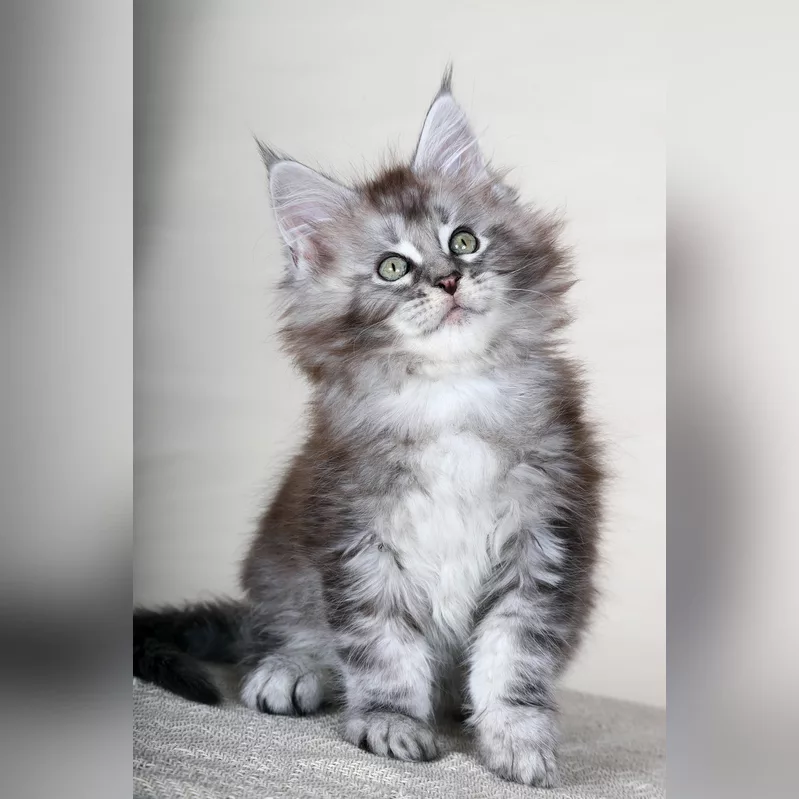
How to Leash Train a Maine Coon?
When done safely, leash training your Maine Coon can provide a truly enriching experience. It gives your cat body conditioning, mental engagement and an open-air environment while protected from dangers and getting harm.
These curious, playful, and affectionate felines require a great deal of time and socialization, so leash training can be one fun way to strengthen your connection. The training process takes patience, consistency, and knowledge of their special spirited temperament.
1. Introduce the Harness Slowly
The initial step is introducing the harness without making it an intimidating experience. Allow your Maine Coon to smell and explore it.
Leave the harness near their resting places, such as their bed or scratching post, so they relate it to a place of security. Using treats or toys at this stage helps build a positive association.
Be sure to size your cat correctly for the harness! Measure across their chest, behind the front legs with a tape measure, so you can get a comfy fit that’s snug and secure but not tight.
2. Positive Reinforcement is Key
Positive reinforcement training is extremely effective with Maine Coons. Utilize positive reinforcement with treats, a clicker, or verbal praise as they approach the harness and briefly wear it to encourage calm behavior.
For example, if your cat willingly allows you to place the harness on their back without resistance, reward them immediately. This fosters collaboration and increases trust.
3. Start Indoors
Start training inside, where your feline friend is most comfortable. After they’ve successfully worn the harness for a walk, take the opportunity to let them wander freely around the house to get acclimated even more.
Pay attention to how they move, so you can adjust the harness if it’s rubbing. Depending on your cat’s adaptability, this step could take a few days or several weeks.
4. Short, Frequent Sessions
Keep training sessions short – 5-10 minutes maximum to start with. Maine Coons are very inquisitive and adventurous, but can get overwhelmed if rushed too fast.
You’ll want to start with short time periods and work your way up once your kitty gets used to the harness.
5. Attach the Leash
After your cat has adjusted to wearing the harness, connect the leash and allow it to trail behind them inside. This lets them get used to the feel of the leash without being confined.
Supervise at all times to keep leashes from getting tangled.
6. Supervise Outdoor Exploration
Once comfortable, give your Maine Coon access to a safe outdoor environment with supervision. Don’t try to control the situation at first; keep the leash short and allow them to be in charge.
Don’t try to do leap training in a loud or chaotic space, since this can scare your cat.
7. Be Patient and Consistent
Maine Coons may be stubborn about new behaviors, particularly if they’re older. Begin training as soon as you’re able and be consistent.
Remember, training isn’t an all-at-once endeavor. It’s an everyday process that calls for your commitment.
8. Address Common Challenges
If your cat stops in their tracks or refuses to wear the harness, go a step back and return to the previous stages. If they won’t walk with the lead, begin by establishing their confidence inside.
To help them stay focused, use treats and encouraging words as positive reinforcement!
9. Never Force Your Cat
This only leads to an anxious Maine Coon, and can severely damage your bond with them. Make their comfort and well-being your main priority over getting things done.
10. Celebrate Successes
More than anything, remember that each step forward is a victory. Serve a reward when they achieve important milestones, like their first outdoor walk, using their favorite treats or more playtime.
This has the added bonus of reinforcing only the positive experiences and helping to strengthen your bond.
Harness vs. Other Restraint Options
To make sure your Maine Coon has a safe and comfortable experience while enjoying the outdoors, pick the appropriate restraint option. This restraint choice will be key to a safe, comfortable, and stress-free journey. Each of these options – collars, carriers, and harnesses – has unique advantages and drawbacks.
Being informed about these can help you choose the best one for your cat’s lifestyle and needs.
Collars: Risks and Limitations
Collars are the most commonly used restraint by dog owners. These have significant drawbacks when it comes to our Maine Coons, especially on their outdoor excursions. Though collars are an excellent solution for carrying ID tags, they don’t provide any measure of control or safety for dogs while adventuring outside.
Furthermore, necks of a large strong muscular breed, such as a Maine Coon, may easily escape a standard collar. This can leave the cat open to hazards such as vehicles and predators. Even breakaway collars, which are supposed to release under pressure to prevent choking, aren’t enough for outdoor adventures.
They can’t stop your cat from escaping or encountering dangerous wildlife. Collars are much more convenient for indoor use, fulfilling a regular functional task. Once you step outside, a harness provides a far superior level of safety and coziness.
Carriers: When to Use Them
Carriers are another smart way to keep your Maine Coon safe, especially when traveling or taking trips to the vet. They are completely enclosed, which provides the most protection and removes the chance of escape.
Example of one such trip, we brought Jonesy with us on a family trip to Ostsee. He remained safe in his cat carrier during transit. Carriers are indispensable for some scenarios.
They still just can’t offer the dynamic, enriching experience that most cats seek when they go outside.
Supervised Outdoor Time
With proper precautions, supervised outdoor time can be a beautiful thing for your Maine Coon.
Harness
A vest-style harness is a great option for adult Maine Coons. It creates a comfortable fit by evenly distributing pressure when adjusted appropriately. Prior to going outdoors, you should leash train your Maine Coon inside to get them acclimated.
This step is important to make sure they are safe and comfortable before you get them out on the harness and leash. Though some might say that Maine Coons aren’t walking dogs, leashed walks or monitored outdoor time can greatly improve their health.
Whether it’s a quick leash walk or some time in an enclosed catio, either option provides considerable stimulation. They work to reduce injuries for your furry friend. If you’re looking for an alternative to outdoor walks that gives your cat outdoor access, look into building a catio.
It creates a protected environment where your Maine Coon can get some fresh air and sunshine.
Expert Advice and Veterinary Insights
Fitting a harness for your Maine Coon means knowing exactly what they need. So it’s crucial to weigh their health factors while weighing your options. Maine Coons have long been known for their massive size and docile temperament. To ensure your dog stays happy and healthy when wearing a harness, you need to provide them more personal care.
Consult Your Veterinarian
Prior to bringing a harness into your routine, we suggest consulting with a veterinarian you rely on to get their expert advice. Maine Coons are prone to congenital diseases such as hypertrophic cardiomyopathy (HCM) or hip dysplasia. These problems can impact their overall comfort while wearing a harness and greatly reduce their enjoyment on outdoor walks.
If their parents haven’t been health-screened, it’s important to plan for a thorough health screening from the start for your Maine Coon. Maximum benefit through regular annual screenings enables early detection of hereditary or external health concerns. Your veterinarian can provide specific recommendations, based on your cat’s size, weight and coat type.
With their heavy coats and propensity to mat when shed, an ill-fitting harness could lead to rubbing or matting. Expert advice guarantees that the harness is snug and secure but not so tight as to inhibit movement or chafe skin.
Behavioral Considerations
This is just as essential as knowing the breed’s characteristics. These cats are highly intelligent, very curious and most love to explore – even their temperament can really depend on the particular cat. Approaching the harness as a new and unique experience is important – allowing them to sniff the harness and wear it indoors before taking the leap outdoors is essential.
For kittens, harness training should wait until after their last vaccinations at around 16 weeks old. This helps make sure they are protected from communicable diseases and all set to go out into the world safely and off-leash. Patience truly is a virtue, so stay tuned!
Maine Coons should not be left unchaperoned outdoors. Rewards such as treats or praise can go a long way in developing a positive association.
Monitor for Stress Signals
Though Maine Coons are a pretty adaptable breed, look out for signs of stress when using a harness. Something as subtle as increased grooming, flattened ears or hesitance to move can all be signs of pain. If you see any of these behaviors, allow them time to settle in or speak with your vet for additional guidance.
Keeping up with a regular grooming schedule, with brushing and dental maintenance can help a lot in reducing stress before and during harness usage. A properly brushed Maine Coon will be less prone to tangling or discomfort while wearing the harness.
Customizing and Modifying Harnesses
With so much at stake in getting your Maine Coon comfortable and safe, the right harness fit is absolutely crucial. Personalize, adapt, and dress the harness to accommodate all the qualities that make your cat distinctive. This simple upgrade will make them more comfortable and help you stay secure while exploring the great outdoors together.
Here are a few customization ideas to help you create the perfect fit for your furry friend.
Adjusting Straps for Optimal Fit
Given their size and the fact that Maine Coons grow slowly, adjustable straps are a key feature in a harness. Your feline friend may be a work in progress, still growing into their grandiose stature, or they may just have a “chonky” build. Regardless, we can quickly modify harnesses to fit their growth or weight loss.
Our OutBound Large Cat Harness for Large Cats™ is designed for felines with waist sizes 19 inches and up. From addressing the need for a safe and comfortable fit for XL kitties, the adjustability means your cat can freely explore the world around them, without any limits to their movement or safety.
The OutBound Cat Harness XL™ has quickly adjustable straps that keep it comfortable. These straps snap firmly to ensure your cat is safe from escapes or back-outs. To ensure your cat stays safe while walking or tethering, this consideration prevents accidental escapes during your walk. It pushes up around sensitive areas like the neck, relieving pressure.
Adding Padding for Comfort
This is extremely important when considering a harness – especially for bulkier cats such as Maine Coons. By adding plenty of padding to key areas – like the chest and shoulders – they help minimize friction and irritation when worn.
The OutBound Cat Harness XL™ was designed with your cat’s comfort and safety in mind. It has soft, non-toxic bridle leather that will be soft on their coat while being extremely durable and long-lasting.
Every harness is made by hand in the USA. Created with your kitty’s unique anatomy in mind, it offers a comfortable, secure fit that won’t impede her natural range of motion. Designed with eco-friendly materials that place your cat’s comfort as a top priority, the Carrier showcases a dedication to protecting the planet.
Addressing Pressure Points
Pressure points can seriously hurt, or even kill if not treated properly. Weight distribution is crucial for active Maine Coons with a passion for adventure and discovery. We design our harnesses to create an efficient weight distribution to prevent any stress on the neck or spine.
The OutBound Cat Harness XL™ is designed with wider, padded straps and additional crossing to help reinforce and distribute pressure down the cat’s body to provide maximum support. Each harness is carefully crafted by hand and subjected to an exhaustive series of tests to earn our Fit & Function guarantee.
This is to make sure that your cat’s happiness and safety are always at the forefront. With our 60-day return policy, we guarantee the quality of each and every custom harness we make.
User Reviews and Real-Life Experiences
As you can see, harness training a Maine Coon can be a gratifying experience for both the cat and its owner. Sociable and intelligent, Maine Coons can comfortably walk on leash and harness with appropriate training. Learning from the experiences of other owners and taking breed-specific needs into account will go a long way towards making the experience a rewarding one.
Learn from Other Owners
Every Maine Coon owner warns that it’s essential to begin harness training as early as possible. They advise starting this process when your cat is still a kitten. Younger cats are more trainable as they are more adaptable and responsive so that helps the process go much smoother.
As one owner mentioned, their 12-week-old Maine Coon took to the harness right away. It only required a handful of quick 10- to 15-minute sessions! Regular training – 10 to 12 days – can accelerate dramatic gains. Most cats quickly learn to wear the harness for up to an hour comfortably.
Owners highly suggest using the harness with positive reinforcement, like treats or soothing petting. This positive association calms the cat and establishes a non-threatening environment. User reviews illustrate that learning to be patient is the key. Gradual exposure is key, particularly for some cats that will not want to wear a harness at first.
Consider Breed-Specific Feedback
Maine Coons specifically are especially cut out for training. Besides their size, they’re drawn to people but cooler and more independent than most cats. Their more muscular stature means you have to pay extra attention when choosing a harness for them.
Most owners find that a vest-style harness provides the best security and comfort for full-grown Maine Coons. At the same time, an h-harness will actually fit smaller Maine Coon kittens more snuggly.
Social interaction is the third key ingredient. For example, Maine Coons love mental stimulation and physical activity like going outdoors on a leash. Caregivers recommend beginning with brief strolls of 10 to 15 minutes. Once the cat is settled, extend the time incrementally. This method avoids flooding the kitty while promoting confidence.
Look for Durability and Safety
Durability should be your first concern when choosing a harness for a Maine Coon. Nimble and spirited, their muscular frames and lively spirit require a harness that will keep them both safely strapped in and comfortable.
Most Pitbull owners will tell you that a harness with double-stitched seams and adjustable straps for a custom fit work best. Safety elements, like quick-release buckles, were most appreciated to provide extra peace of mind during adventures outdoors.
Safety Standards and Certifications
It’s not just about comfort when choosing the right harness for your Maine Coon. It’s especially important for keeping them safe as they enjoy outdoor adventures. Maine Coons are one of the largest domesticated breeds, and they have a reputation for being friendly goofballs. They require harnesses that can withstand their immense power and exuberance.
Safety standards and certifications are crucial. Knowing these standards and certifications can give you confidence that you’re choosing a product that will keep your cat safe and happy.
What to Look For
When ranking harnesses on both safety and functionality, give points to harnesses for each safety feature present. Look for a harness that’s designed with plenty of adjustability so you can customize the fit without inhibiting your pup’s movement. This is particularly critical for Maine Coons.
Their muscular build and thick fur require harnesses that truly account for their unique physique. Choose models that feature padded fabric to minimize chafing and strong clips that stand up to regular use. Reflective elements are the other big factor – especially for evening walkers or those walking in low light conditions.
Harnesses made for cats are best, rather than those made for small dogs. Cat-specific harnesses are generally much lighter, keeping your Maine Coon comfortable for long periods of use. If you’re just getting started with harness training, look for models with dual-clip systems.
With front and back leash attachment points, these harnesses provide you with great control over your dog on walks.
Reputable Brands
Not all dog harnesses are designed the same way, so choosing quality harnesses from well-known brands helps guarantee that quality dog harnesses are produced to industry standards. Brands such as Kitty Holster, PetSafe, and Rabbitgoo are known throughout the industry for their reliable cat harness.
These companies focus on durable, comfortable, and secure design, perfect for energetic breeds such as Maine Coons. Rabbitgoo escape-proof harnesses feature a vest-style design. This T-shape design covers the dog’s entire chest and back, allowing for even distribution of pressure and avoiding injury and stress.
Always check the product specifications and customer reviews to ensure the dog car safety harness is right for you.
Testing Protocols
Our goal is to bring safer harnesses that have been rigorously tested to use as a safety standard. Reputable brands often perform their own stress tests on products. They just need to make sure that these items are built to endure the high pulling force of cats, especially Maine Coons.
Choose dog harnesses certified by organizations that champion safety for your best friend, and turn to customer reviews to better understand what actually works in the real world.
Integrating Harness Use into Daily Life
A good, comfortable harness opens up an entire universe of safe adventures for both you and your Maine Coon. Wishing you happy, safe adventures as a family! When integrated into their life in a purposeful way, it becomes an enriching addition to their daily routine that enhances their life and deepens your relationship with them.
Here’s how to make harness use as second nature as putting on a seatbelt.
Make it Part of the Routine
The most important thing in making a harness feel like a natural part of your cat’s life is consistency. Begin with allowing your Maine Coon to acclimate to the harness inside first. Start with minimal time periods. Get them to start using it during quiet times only – at home, after a meal or during their normal down time.
Start small and increase the length each day, paying close attention to their comfort level. To make the harness feel more normal, combine using it with any other rewarding activities your cat enjoys. If your Maine Coon enjoys napping in the sun, have them wear their harness while they do so.
In turn, their children can take advantage of the sunshine safely! When you pair wearing the harness with fun and enjoyable experiences, your pet will learn that it’s just another part of their day in no time. Having a predictable, regular schedule for using the harness goes a long way in helping to reinforce acceptance.
Start wearing it at the same time each day, such as before outdoor walks or play periods.
Combine with Playtime
Harness time doesn’t need to be all serious – it can be mixed with fun. Use your Maine Coon’s curious nature to encourage them to play in a new, interactive way while they’re outfitted with their harness. Use their favorite wand toy or laser pointer to get their focus.
This will help ensure they’re active and focused on the thrill of play, helping them to be more receptive and relaxed as they get used to the feel of the harness. If your Maine Coon enjoys chasing toys or climbing, incorporating these activities during harness time helps them associate it with joy and freedom.
For example, you can allow your animal companion to chase a feather toy in an enclosed outdoor area. Just hold them on a line so you know they can dig around without getting into trouble! This method ensures that harness use is fun, while promoting healthy movement and self-assurance as well.
Create Positive Associations
All of these things are important. Positive reinforcement is key to getting your Maine Coon comfortable in their harness. Try using treats, praise, or calming strokes every time they go near or interact with the harness. Reward them with a little bit of their favorite treat.
This will make it more likely that they will allow you to put the harness on! Never stop reinforcing calm, cooperative behavior at every step. Preventing your cat from being overloaded is just as key as setting a timeframe.
If they begin to exhibit stress or discomfort, back off and give it another try at a later time. Providing a low-pressure atmosphere in which your Maine Coon is comfortable will guarantee long-lasting success. Given enough time, these positive interactions build a foundation of trust.
This way, using their harness is a positive and fun routine they look forward to.
